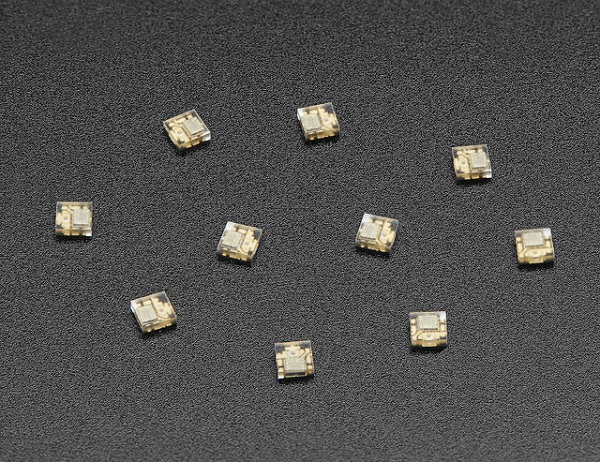The TFT-LCD market has already become a red ocean. Korea and Japan take the lead in the OLED market. In terms of display technologies, Taiwan should seize the chance to pioneer the development of Micro LED if it wants to secure a competitive share in the global display market in the future.
 |
|
(Image: Micro LED Adafruit Industries via Flickr CC2.0) |
Micro LED has the edge over OLED and LCD when it comes to brightness, response time, and power consumption. It features high durability and is bright enough to present clear images under sunlight. Because of all that, the industry consider Micro LED the next generation display technology. Apple, Samsung, Sony, and other companies actively develop related manufacturing techniques to improve the quality of their production.
Despite the fact that Taiwan holds a big share in the TFT-LCD market, as Chinese display makers gradually scale up, it is losing competitiveness in respect of price and production capacity. On the other hand, when OLED prevails in the smartphone and TV markets, Taiwan barely benefits from the trend as it already handed over related technologies to other countries such as Korea and Japan two decades ago.
In other words, Taiwan has to put more effort in developing advanced technologies and keep them to itself, or else it will only be able to earn profits from low-margin industries.
Chih-I Wu, Vice President and General Director at Electronic and Optoelectronic System Research Laboratories, Industrial Technology Research Institute (ITRI), believes that Micro LED can be an opportunity that helps Taiwan reverse its situation in face of threats from Korea and Japan in the display market.
Things will be different if Taiwan successfully builds a Micro LED supply chain ahead of the other countries.
Wu said that the LCD panel production capacity in China has been escalating. The expansion is underpinned by all kinds of government subsidies. In this regard, Taiwan is far behind. It is also very difficult for Taiwan to compete against Korea and Japan in the OLED market. Developing Micro LED is the only chance it has to outrun them in this field.
To bring Micro LED into existence requires technologies from the LED, semiconductor, and display industries. From its domestic supply chains, Taiwan has abundant resources and technological support, whether it is the production of LED chips, the design of driver ICs, or the integration of display modules.
Currently, no one is really able to mass produce and commercialize Micro LED. Those TVs and displays that were showcased at trade shows are still prototypes. Most of the companies are still stuck with the mass transfer technology, namely the technique to move Micro LED chips from temporary substrates onto target backplanes. That is also the bottleneck Taiwan needs to break through as soon as possible if it still wants to develop its display industry, Wu stressed again.












